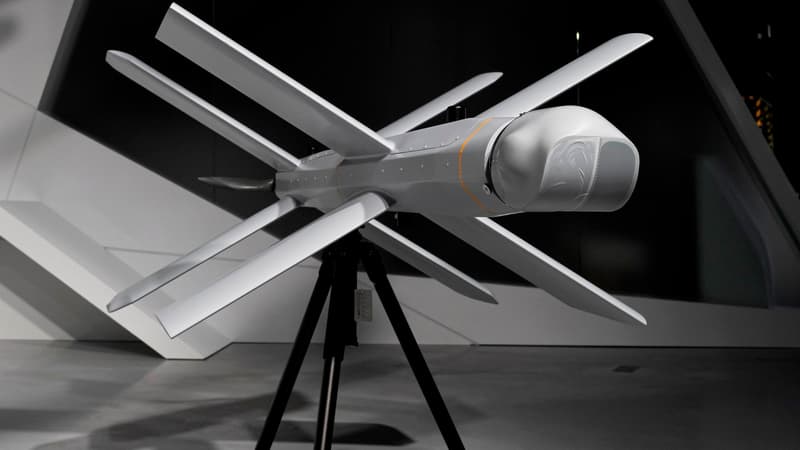The Russian Lancet-3 explosive drone has become an important asset of the Russian military over the course of the conflict, particularly against certain Western-supplied weapons, while also having the advantage of being innovative and inexpensive.
“The small Russian Lancet drone is establishing itself as one of Moscow’s preferred weapons to deal with the influx of enemy equipment, in particular through the manufacture of ‘drone counter-batteries’. Typical solution for long-term conflicts”, analyzes the consultant French Stephane Audrand on Twitter.
Produced by the Zala Aero group, linked to the consortium kalashnikov, this loitering ammunition is composed of a fuselage of about 1.60 meters, equipped with four wings and a propeller at the rear. Laden with explosives, it has distinguished itself for months by its effectiveness and seems for the moment impervious to the sanctions regimes established against Moscow. This drone is equipped with various guidance systems and a camera to transmit live video confirming that the target has been hit.
“This drone is cheaper than transporting and deploying artillery systems, tanks on a battlefield. You can load up to 10 Lancets into a van located 40km from enemy lines to rain down bombs on the enemy,” he explained to Russia beyond Gennady Rojkov, head of the Zala Aero special projects group, during the presentation of this drone in 2019.
A low cost battery
The Lancet puts pressure on Ukrainian artillery, particularly certain Western-supplied 155mm guns, the Russians use this drone “as a form of counter-battery,” Indian analyst Girish Linganna explains in Frontier India.
Low-cost, estimated at between $20 and $40,000 each, according to Girish Linganna, “it has the advantage of being little vulnerable to opposing means of defense (for the moment),” stresses Stéphane Audrand.
However, The Lancet is vulnerable. In July 2022, the Ukrainian military announced that it had shot down a Lancet, according to footage posted on Telegram.
Its first version was used in Syria in 2019, then “a new, more successful version was observed in action in July 2022 and its releases have become daily since October,” according to this specialist.
“Their production does not seem to be affected too much by the sanctions. If it is still a bit early to say if it is thanks to the stocks or if there is substitution”, estimates Stéphane Audrand.
The next generation of the Lancet is in the works. They have artificial intelligence to recognize targets to hit, said Gennadi Rojkov, head of Zala Aero’s special projects group.
Source: BFM TV


